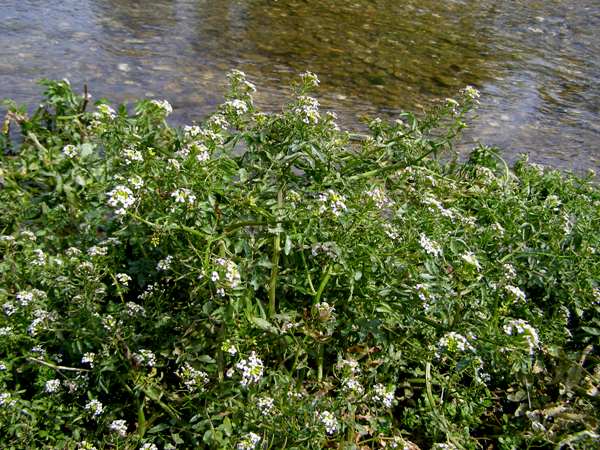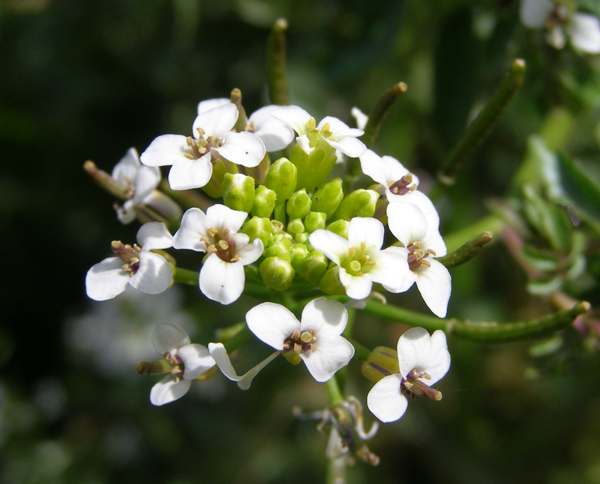Nasturtium officinale - Watercress
Phylum: Magnoliophyta - Class: Liliopsida - Order: Brassicales - Family: Brassicaceae

Description
The white flowers, which are between 4 and 6mm across, have four petals.
Habitat
This well-known salad plant, a member of the Cabbage family, grows in shallow water and is particularly abundant in lime-rich ditches and small streams.
Distribution
Watercress is widespread throughout Britain and Ireland; it is native to Europe and Asia.
Blooming times
In Britain and Ireland, Watercress blooms from May right through the summer and into October.

Uses
Although this is an edible plant, it is unwise to eat Watercress from streams running through sheep country or anywhere that the water is stagnant; liver flukes, tiny parasites that can attack human beings as well as farm animals, are likely to inhabit such places.
Etymology
As its common name suggests, Watercress is an aquatic plant. The specific epithet officinale indicates hat this plant was considered to have medicinal properties.
The plants shown on this page were photographed on the River Meon, Hampshire, in June.
Sue Parker's latest ebook is a revised and enlarged second edition of the acclaimed Wildflowers in the Algarve - an introductory guide. Full details here...
Buy it for just £3.95 on Amazon...
Please Help Us: If you have found this information interesting and useful, please consider helping to keep First Nature online by making a small donation towards the web hosting and internet costs.
Any donations over and above the essential running costs will help support the conservation work of Plantlife, the Rivers Trust and charitable botanic gardens - as do author royalties and publisher proceeds from books by Pat and Sue.



